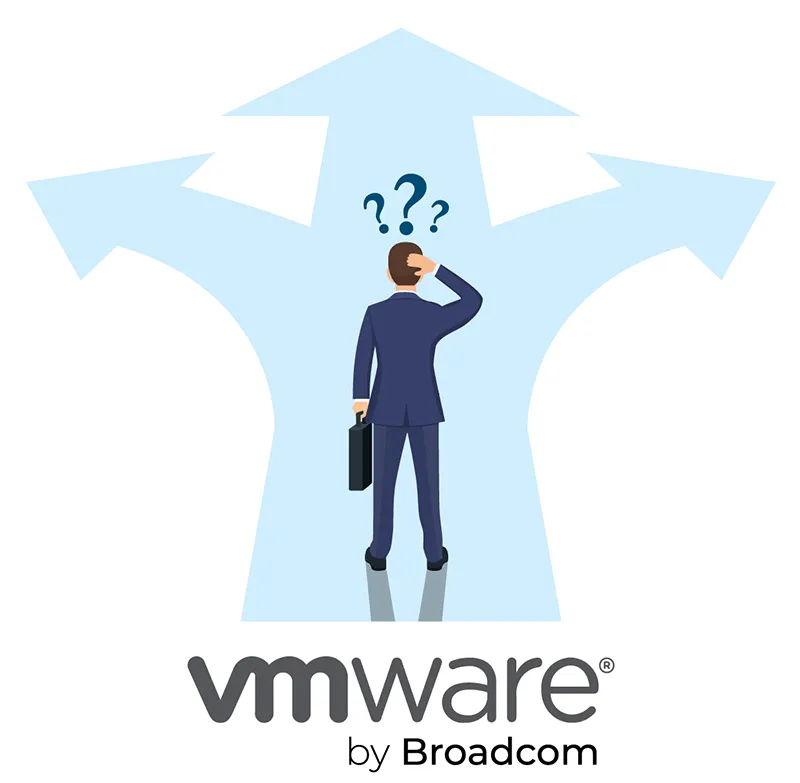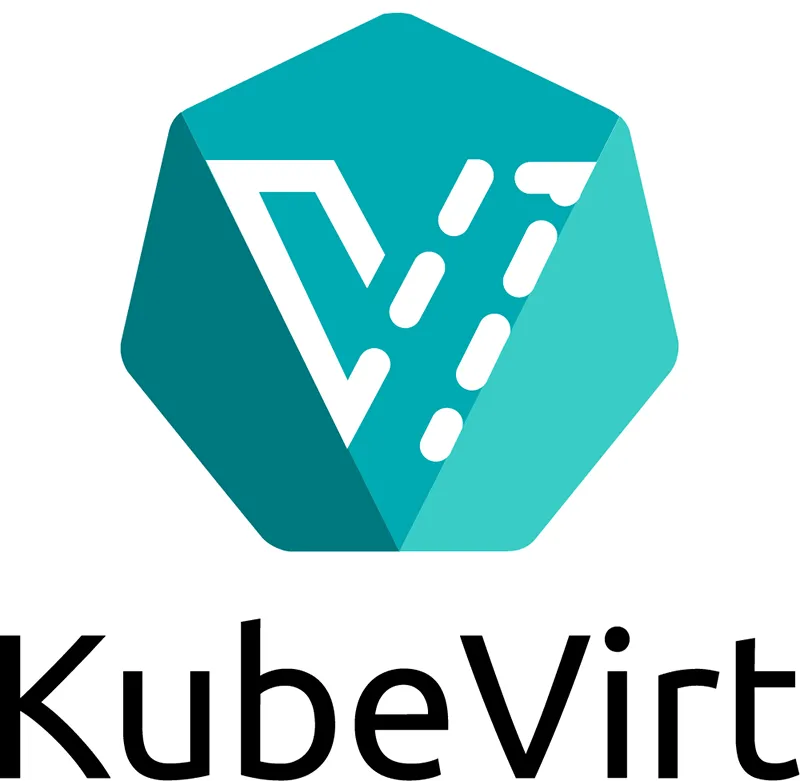Introducción
VMware ha sido la fuerza dominante en la virtualización empresarial durante décadas, ofreciendo una plataforma robusta y escalable para la infraestructura de TI. Sin embargo, los cambios significativos en la industria, incluyendo el aumento de los costos de licencia, la dependencia de un proveedor y los cambios tras la adquisición de VMware por parte de Broadcom, han llevado a muchas organizaciones a explorar alternativas. A medida que las empresas buscan soluciones rentables, flexibles y con visión de futuro, la migración de VMware a plataformas modernas como OpenStack, OpenNebula, oVirt, KubeVirt y servicios de nube pública (AWS, Azure, GCP, Alibaba Cloud) se ha convertido en una opción cada vez más viable.
Este artículo proporciona a los líderes de TI una comprensión integral de por qué es necesaria la migración, las ventajas y los desafíos de cada alternativa y las consideraciones clave para un proceso de migración exitoso.


Principales razones para dejar de usar VMware
1. Aumento de los costos y cambios en las licencias
El cambio hacia una modelo basado en suscripción y aumento de las tarifas de licencia han ejercido presión financiera sobre las empresas que utilizan VMware. Hoy en día, muchas organizaciones están reevaluando sus presupuestos y explorando alternativas rentables que ofrecen capacidades similares o superiores sin un precio elevado.
2. Dependencia del proveedor y menor flexibilidad
El ecosistema propietario de VMware limita la flexibilidad y la integración con las tecnologías emergentes de código abierto y nativas de la nube. Las empresas que buscan un mayor control sobre su infraestructura y evitar la dependencia de proveedores consideran activamente alternativas abiertas.
3. Adopción de nubes híbridas y múltiples
A medida que las empresas dependen cada vez más de una combinación de infraestructura local y servicios de nube privada/pública, las estrategias híbridas y multicloud se han vuelto esenciales para la flexibilidad y la escalabilidad. Las empresas necesitan soluciones que integrarse perfectamente con los principales proveedores de nube pública como AWS, Microsoft Azure y Google Cloud Platform y nubes privadas basadas en KVM, lo que les permite distribuir cargas de trabajo de manera eficiente en diferentes entornos.
Si bien VMware ofrece capacidades de nube híbrida, muchas plataformas alternativas brindan mayor flexibilidad, ventajas de costos y soporte nativo de múltiples nubes, lo que permite a las organizaciones optimizar el rendimiento, reducir la dependencia de proveedores y mejorar las opciones de recuperación ante desastres.
4. Necesidad de integración de Kubernetes y nativa de la nube
Las estrategias de TI modernas priorizan la contenedorización y Kubernetes para gestionar eficientemente las cargas de trabajo. Si bien VMware ofrece Soporte de Kubernetes a través de TanzuSu implementación puede ser compleja y requerir licencias adicionales, gastos generales de gestión y esfuerzos de integración. Muchas empresas consideran que estos desafíos y los altos costos obstaculizan su adopción. Por ello, exploran cada vez más KubeVirt y otras plataformas en la nube que ofrecen soluciones de Kubernetes nativas de la nube con menos dependencias y menor complejidad operativa.
Simplifique su migración de VMware: ¡obtenga una consulta gratuita!
¡Gracias por tu solicitud!
Nos pondremos en contacto contigo pronto.
Respetamos su privacidad. Vea nuestra política de privacidadPuedes darte de baja en cualquier momento.
Elegir la alternativa adecuada: Comparación de plataformas modernas (empezando por las soluciones de nube privada)
1. OpenStack: La plataforma de nube de código abierto líder
OpenStack es una de las plataformas de computación en la nube de código abierto más ampliamente adoptadasProporciona capacidades de infraestructura como servicio (IaaS) para entornos privados y públicos. Empresas y proveedores de servicios lo utilizan para gestionar recursos informáticos, de almacenamiento y de red a gran escala.
Ventajas:
- Código completamente abierto, eliminando la dependencia del proveedor
- Escalable y adecuado para grandes empresas e implementaciones de nube privada.
- Fuerte soporte para entornos multicloud e híbridos
- Un ecosistema rico con amplias opciones de redes y almacenamiento
Contras:
- La implementación y la gestión requieren personal calificado
- La configuración y el mantenimiento pueden ser complejos
- Es posible que sea necesario realizar ajustes adicionales para optimizar el rendimiento
Ideal para: Empresas que necesitan una solución de nube privada altamente escalable con Amplias opciones de personalización y la libertad de la tecnología de código abiertoComo buena opción, es mejor utilizar soluciones de proveedores como Red Hat OpenStack o Mirantis para mitigar las desventajas.
2. OpenNebula: Nube privada ligera y fácil de implementar
OpenNebula es una plataforma de código abierto para la gestión de la nube y la virtualización, diseñada para la simplicidad y la eficiencia. Es especialmente popular entre las pequeñas y medianas empresas que buscan una solución de nube privada fácil de implementar con capacidades de nube híbrida.
Ventajas:
- Implementación sencilla con menor sobrecarga de administración en comparación con OpenStack
- Fuerte soporte tanto para máquinas virtuales como para contenedores
- Capacidades de nube híbrida integradas (AWS, Azure, Google Cloud)
- Alternativa rentable para pymes y empresas medianas
Contras:
- Comunidad más pequeña y menos funciones de nivel empresarial en comparación con OpenStack
- Escalabilidad limitada para implementaciones extensas en la nube
Ideal para: Empresas que necesitan una solución de nube privada simple y eficiente que sea fácil de administrar y se integre perfectamente con entornos de nube híbrida.
3. oVirt: Alternativa de virtualización empresarial
oVirt es una plataforma de virtualización de código abierto basada en tecnología KVM (máquina virtual basada en kernel). Proporciona gestión de virtualización a nivel empresarial y suele considerarse una alternativa directa a VMware para entornos virtualizados tradicionales.
Ventajas:
- Elimina las tarifas de licencia con un modelo de código abierto
- Se integra perfectamente con los ecosistemas de Red Hat (RHEL, CentOS, Fedora)
- Proporciona funciones de virtualización avanzadas comparables a VMware
- Ofrece un proceso de implementación más sencillo en comparación con OpenStack
Contras:
- Carece de funciones nativas de la nube integrales y de compatibilidad con contenedores.
- Necesita integración con herramientas adicionales para crear una solución de nube completa
- Tiene un ecosistema y una comunidad más pequeños en comparación con OpenStack
Ideal para: Empresas que necesitan una alternativa confiable a VMware para la virtualización tradicional sin la complejidad de los entornos nativos de la nube.

4. KubeVirt: Máquinas virtuales en un entorno Kubernetes
KubeVirt es una extensión de código abierto para Kubernetes Permite la implementación y gestión de máquinas virtuales dentro de un clúster de Kubernetes. Está diseñado para organizaciones que buscan ejecutar cargas de trabajo contenedorizadas y virtualizadas sin problemas en un entorno nativo de la nube.
Ventajas:
- Permite una implementación fluida de máquinas virtuales dentro de Kubernetes
- Apoya a las empresas que migran de máquinas virtuales a entornos en contenedores.
- Se integra de forma nativa con Kubernetes para cargas de trabajo nativas de la nube
- Proporciona una solución rentable y de código abierto
Contras:
- Carece de las capacidades de virtualización completas de VMware o OpenStack
- Funciona mejor para organizaciones con infraestructura de Kubernetes existente
- Requiere experiencia en gestión y operaciones de Kubernetes
Ideal para: Empresas que priorizan Kubernetes como su infraestructura principal mientras aún necesitan brindar soporte a las máquinas virtuales heredadas.

5. Servicios de nube pública: AWS, MS Azure, Google Cloud Platform (GCP), Alibaba Cloud
Plataformas de nube pública como AWS, microsoft azure, GCP y Alibaba Cloud Proporcionar servicios de infraestructura totalmente gestionados, lo que permite a las organizaciones escalar sus cargas de trabajo globalmente. Estas plataformas ofrecen precios de pago por uso, alta disponibilidad y un amplio ecosistema de herramientas y servicios nativos de la nube.
Ventajas:
- Infraestructura totalmente administrada con alta escalabilidad
- Los precios de pago por uso reducen la inversión inicial
- Sólido ecosistema de servicios nativos de la nube
- Recuperación ante desastres sin inconvenientes y disponibilidad global
Contras:
- Costos operativos más elevados a lo largo del tiempo en comparación con la nube privada
- Riesgos de dependencia del proveedor con servicios de nube propietarios
- Solo soporte básico si no se paga aparte
- dominio estadounidense
Ideal para: Empresas que necesitan una infraestructura altamente escalable con servicios totalmente administrados y un fuerte enfoque en cargas de trabajo nativas de la nube.
Migre desde VMware sin tiempo de inactividad: ¡contáctenos!
¡Gracias por tu solicitud!
Nos pondremos en contacto contigo pronto.
Respetamos su privacidad. Vea nuestra política de privacidadPuedes darte de baja en cualquier momento.
Explorar Consideraciones clave cuando migrando desde VMware, incluida la evaluación de la carga de trabajo, la selección de la plataforma, la red, las medidas de seguridad y más en nuestro artículo: Migración de VMware a plataformas modernas: la necesidad, los requisitos y las consideraciones.
Conclusión
Empresas que buscan rentabilidad, flexibilidad y capacidades nativas de la nube debe migrar desde VMware Plataforma. La alternativa adecuada depende de las necesidades específicas: OpenStack para la nube privada, OpenNebula para una gestión ligera, oVirt para la virtualización tradicional, KubeVirt para máquinas virtuales gestionadas por Kubernetes o nubes públicas para la escalabilidad.
Con la estrategia de migración adecuada y una planificación y ejecución adecuadas, las empresas pueden optimizar costos y rendimiento, a la vez que garantizan una transición fluida. Ya sea que se trate de la transición a soluciones de código abierto o de aprovechar la nube pública, es fundamental alinear su decisión con los objetivos de su negocio y sus capacidades técnicas.
Hystax es un experto de confianza en la transformación de infraestructura de TI. Nos especializamos en migración a la nube, recuperación ante desastres y copias de seguridad. Nuestra solución totalmente automatizada, Hystax Acura, ayuda a las empresas a migrar sin problemas sus cargas de trabajo a cualquier plataforma de nube o virtualización, garantizando un tiempo de inactividad mínimo y la continuidad operativa. Con Hystax Acura, las empresas pueden lograr una migración fiable, segura y eficiente de VMware a OpenStack. oVirt, u otras nubes privadas basadas en KVM, KubeVirt, nubes públicas o cualquier entorno preferido sin interrupción operativa.
Hystax proporciona una Solución confiable para la migración de VMware a OpenStack, lo que garantiza una transición eficiente y totalmente automatizada con un tiempo de inactividad mínimo. Con la plataforma Hystax Acura, las empresas pueden... migrar a OpenStack u otros entornos modernos manteniendo la continuidad operativa.

